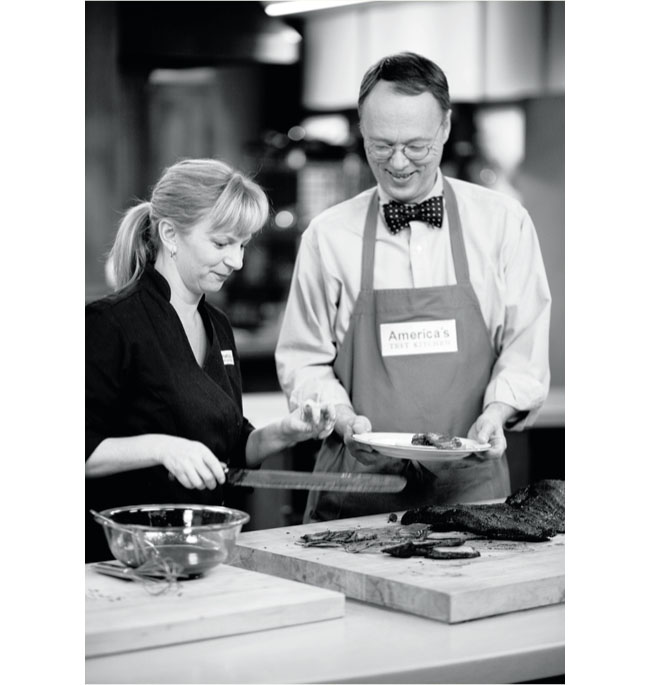BEHIND THE SCENES
GIVE THAT MEAT A REST

You’ll never see anyone in the test kitchen cut into a roast, or any meat, straight from the oven. They always let it rest before slicing. Exposed to heat during cooking, proteins, which resemble coiled springs, undergo a radical transformation in which they uncoil and then reconnect to each other in haphazard structures. This process, called coagulation, is the reason that proteins become firm and lose moisture during the cooking process. The longer that proteins are exposed to heat, the tighter they coagulate and the more liquid they drive toward both the surface and the center of the meat, much like wringing a wet kitchen towel.
If you were to cut the meat immediately after removing it from the heat source, the liquid suspended between the interior proteins is driven toward the surface and would simply pool (or what many chefs call bleed) on the cutting board or plate because the proteins have not had time to relax. The best way to prevent this pooling of juices and a dry hunk of meat is to rest the roast. Although the process of coagulation is not reversible, allowing the protein molecules to relax after cooking slows the rate at which they continue to squeeze the liquid between their tight coils and increases their capacity to retain moisture. A short rest on the cutting board will decrease the amount of liquid lost during carving by about 40 percent. There’s another good reason to have some patience and let your meat rest—it allows you some time to finish the other components of dinner, which is especially useful around the holidays when there are typically loads of sides to get to the table too.